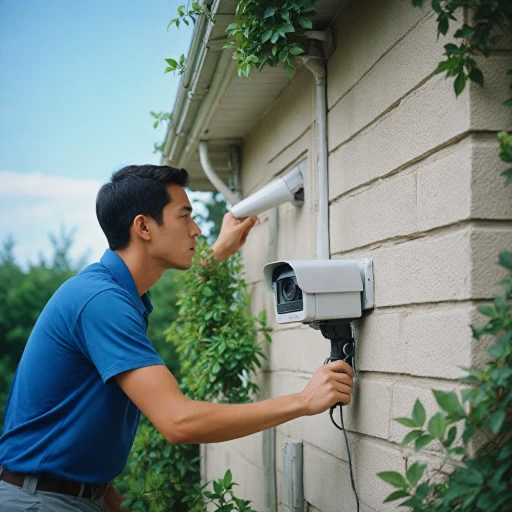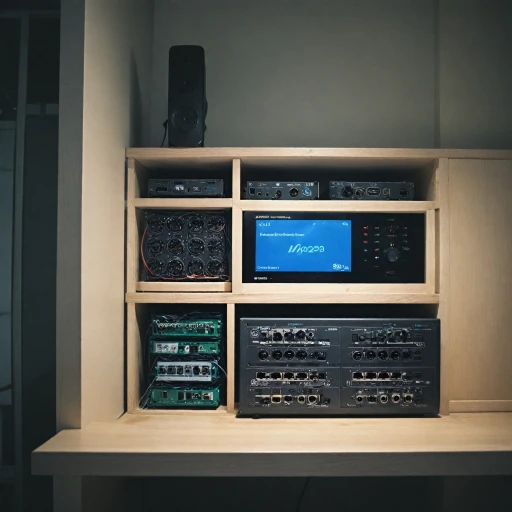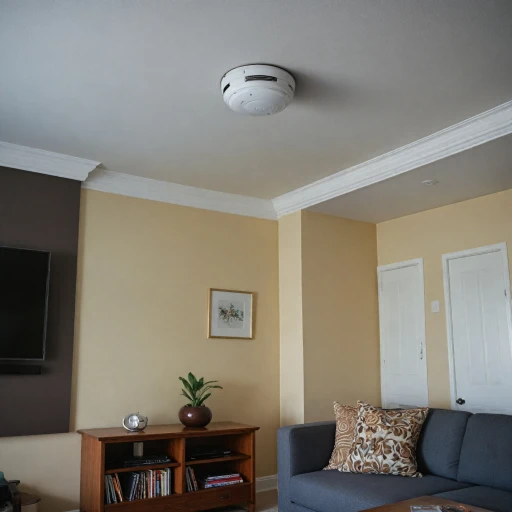Introduction to PoE Cameras
Introduction to Power over Ethernet for Home Protection
When it comes to home security, understanding the technology behind the equipment can make a significant difference in effectively safeguarding your environment. One such technology is PoE, short for Power over Ethernet, which is increasingly being utilized in security camera systems. This innovation allows a single Ethernet cable to provide both power and data transmission, simplifying the installation of security cameras by reducing the number of cables needed.
PoE security cameras offer a robust solution for those looking to enhance their home surveillance systems. The beauty of PoE technology lies in its simplicity and efficiency. It eliminates the need for separate power sources or additional cabling, which is particularly beneficial in areas where access to power outlets is limited or inconvenient. By integrating power and data control, PoE provides a streamlined approach to network security camera installation.
These cameras are connected through Ethernet cables, usually CAT5e or CAT6, which are capable of supporting data transmission as well as supplying power. A PoE switch or injector is often used to feed the required power through these Ethernet cables, enabling the cameras to function optimally without the need for additional electrical infrastructure.
The deployment of PoE cameras in home security systems not only simplifies the setup but also enhances security by ensuring a more reliable connection. The centralized management of power and data networks makes troubleshooting and maintenance more straightforward, thus offering a practical and efficient solution for secure video surveillance.
How PoE Technology Works
How PoE Technology Powers Security Systems
Power over Ethernet (PoE) cameras are a fantastic addition to home security infrastructure, offering a combination of convenience and efficiency. Understanding how PoE technology works is essential for those considering this option for their home surveillance needs.
At its core, PoE technology allows a single Ethernet cable to transmit both power and data to your cameras. This eliminates the need for separate electrical wiring and reduces clutter. The power is delivered over Ethernet cables, often CAT 5e or CAT 6, which are capable of supporting the necessary voltage and bandwidth for streaming high-quality video feeds.
The integration of power and data transmission into one cable greatly simplifies installation and maintenance of security systems. You can connect multiple cameras to a central PoE switch or a Network Video Recorder (NVR) without worrying about proximity to power outlets. This setup also helps in achieving wider coverage and enables seamless integration with network systems for access control, data storage, or video management.
To ensure a successful installation of PoE cameras, it's crucial to choose the right type of Ethernet cable, adapting to the specific requirements of your camera systems. For further insights, you can learn more from resources like choosing the right cable for your CCTV security camera.
Advantages of Using PoE Cameras
Enhanced Reliability and Simplified Installation
PoE cameras bring a host of advantages for home security, offering enhanced reliability and simplified installation processes. At the core of these cameras is the Power over Ethernet (PoE) technology, which simplifies the power and data transmission through a single Ethernet cable. This eliminates the need for separate power cables, reducing clutter and installation costs.
Seamless Data and Power Transmission
In a typical PoE security system, both power and data are transmitted through Ethernet cables, thanks to a PoE switch or injector. This unified approach not only streamlines the setup but also ensures that the cameras receive consistent power and network access. Consequently, a stable video feed is guaranteed, which is crucial for maintaining reliable surveillance.
Cost-Effective and Scalable
PoE cameras are cost-effective due to their minimized cable requirements and easier setup. The integration of power and data cabling means that installations can be carried out quickly, lowering labor costs. Furthermore, PoE systems are notably scalable, allowing for additional cameras to be added effortlessly, ideal for expanding security requirements. The ability to integrate with various network video recorders (NVRs) further enhances this scalability.
High-Quality Surveillance Features
PoE cameras often come equipped with superior features such as night vision and high-definition video quality, essential for comprehensive security. The Ethernet connection ensures that high-quality video transmission is maintained, providing clear and crisp footage suitable for detailed analysis.
Power Outage Resilience
Another advantage lies in their resilience to power failures. PoE systems can be connected to backup power sources, ensuring continuous operation even during outages. This advantage ensures that your surveillance systems remain active, an important consideration for any security-conscious homeowner.
For a deeper dive into how the reliability of video data transmission is key in PoE cameras, you can explore more in this
related article.
Comparing PoE Cameras with Wireless Cameras
The Battle of Connectivity: PoE vs. Wireless
When comparing PoE cameras to their wireless counterparts, several factors come into play, particularly concerning the way power and data are transmitted. Understanding these differences can help determine which option best suits your home security needs.
Connectivity Reliability
PoE cameras utilize a single Ethernet cable to deliver both power and data transmission, ensuring a stable connection. This contrasts with wireless security cameras, which often depend on Wi-Fi, potentially leading to connectivity issues if the signal is weak or disrupted. By using Ethernet cables, PoE systems experience less interference, providing a more dependable feed for your surveillance video.
Installation and Power Management
Wireless cameras are often praised for their ease of installation, requiring nothing more than a power source and Wi-Fi network to operate. However, PoE cameras consolidate power and network access into one Ethernet cable, reducing cable clutter and simplifying the setup process. Although it may seem more complex initially, this system negates the need for separate power cables or power outlets, especially when a PoE switch or PoE injector is in place.
Performance and Security
PoE networks can offer better security than their wireless counterparts. Wired connections are less susceptible to hacking or interruptions compared to wireless connections, which can be more vulnerable to interference or breaches. PoE also tends to support higher resolutions for video streams, providing clearer and more detailed footage for security monitoring.
Network Video Recorder (NVR) Integration
Another key advantage of PoE camera systems is their seamless integration with NVRs. These recording systems connect directly to the Ethernet network, allowing for immediate access to both live and recorded footage. This integration is often more sophisticated than most standalone wireless camera systems, offering expanded storage options and advanced video management features.
Considerations for Future Expansion
When planning the future of your surveillance system, PoE might offer better scalability. Adding more cameras to a PoE network can be as simple as connecting additional Ethernet cables to the PoE switch. Expanding a wireless system, on the other hand, can quickly lead to strained network bandwidth and connectivity issues.
In summary, while both PoE and wireless cameras have their own distinct advantages, the choice may boil down to the specific needs of your home security setup. Factors like installation ease, future-proofing, and reliability should guide your decision-making process in selecting the most suitable camera systems for your surveillance needs.
Considerations for Installing PoE Cameras
Essential Tips for Integrating PoE Cameras into Your Home
When installing PoE cameras for your home security, several key considerations can ensure optimal performance and the successful implementation of your surveillance system.
Firstly, assess your current network setup. Ensure your existing network can handle the additional data transmission that PoE cameras will require. This may involve upgrading your network switch to a PoE switch or considering the use of a PoE injector for power and data needs.
Cable Management
Using Cat5e or Cat6 Ethernet cables is recommended for PoE camera installations due to their capability to support the data and power needs over longer distances. Proper cable management is crucial not only for aesthetic reasons but also for functionality, as it impacts the overall efficiency and longevity of the camera systems.
NVR System Integration
Integrating your PoE cameras with a Network Video Recorder (NVR) is another important step. The NVR will allow you to record and access video footage, providing a comprehensive view of your property’s activities. Ensure compatibility between your PoE security camera systems and the NVR to avoid any operational issues.
Power Source and Backups
Consider the power source for your cameras. While PoE cameras use a single Ethernet cable for power and data, having a reliable backup power source can help maintain functionality during power outages. This could be achieved through uninterrupted power supplies (UPS) or by strategically placing cameras with access control features.
Security and Access
Security cameras should be placed where they cover all critical areas of your property. Pay attention to potential blind spots and ensure the cameras are tamper-proof. Regularly update security protocols, including password protection and network access control, to safeguard against unauthorized access.
Successful installation of PoE security cameras can significantly enhance your home security when paired with effective planning and careful consideration of these aspects. As technology evolves, staying informed about future trends and advancements in PoE camera technology will keep your surveillance systems robust and efficient.
Future Trends in PoE Camera Technology
Exploring the Progress and Prospects in PoE Cameras
The world of home security is constantly evolving, with new technologies appearing to offer better solutions for protecting your home. In recent years, PoE cameras have gained prominence owing to their efficient and cost-effective nature. As demand for robust security systems increases, the future of Power over Ethernet (PoE) camera technology promises innovative developments that will enhance both security and convenience.
PoE systems already streamline the installation process by utilizing a single ethernet cable for both power and data transmission. This limits the amount of clutter and reduces the time and cost of installation since there's no need for separate power sources. In the future, we can expect further advancements that may involve even greater simplification and increased accessibility.
Improved data transmission is another exciting trend. With the rise of intelligent video analytics, PoE cameras are set to integrate more sophisticated processing capabilities, potentially allowing for real-time data analysis within the network itself, minimizing the risk of potential network bottlenecks due to large data loads.
Smart home integration is steadily becoming a norm, and PoE security systems are not being left behind. They are likely to become more compatible with other smart home devices, offering seamless interaction within a smart home ecosystem. This could mean easier access control from various devices within a home network, thus enhancing the overall efficacy of home security systems.
Furthermore, future PoE cameras may come equipped with advanced features such as enhanced night vision, facial recognition technology, and motion detection capabilities, providing comprehensive surveillance under varying conditions.
While new models of PoE cameras emerge, the choice of either ethernet PoE or PoE cameras from a vast market could seem daunting. However, it's crucial for consumers to prioritize aspects such as video quality, durability against environmental factors, and the capabilities of PoE switches or injectors used within the network.
In conclusion, while the fundamental benefits of PoE technology are being continuously leveraged, evolving trends are set to redefine its role in home security systems, making them more versatile and efficient.














